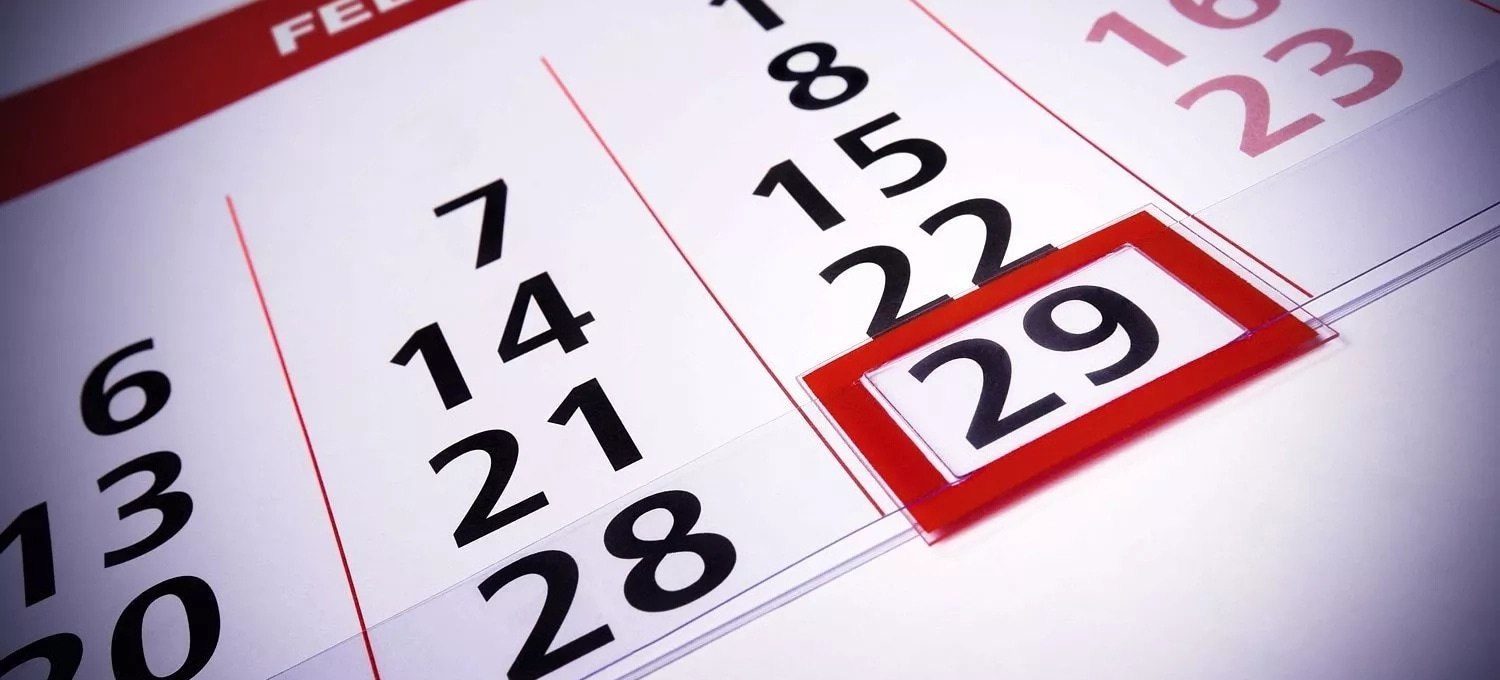As New Year 2025 approaches, people are somewhat anxious to know whether it will be a leap year. Leap years are traditionally feared and nothing good is expected from them.
When the calendar period of 2024 came to an end, people became interested: how many days are there in 2025? Is it an ordinary year, consisting of 365 days, or has an extra day “sneaked up” – the 366th?
Will New Year 2025 be a leap year?
2025 is not a leap year, that's why in it 365 days.
2025 will not be a leap year, but astrologers do not consider even leap years to be special. The movement of planets during these periods is no different from usual and there are no special interpretations on this account. However, some astrological schools consider leap years to be fateful. Theoretically, they can change a person's destiny, but for good or for bad - depends on the person and the position of the stars.
What does leap year mean and how did it come about?

Before counting the number of days in 2025, it is worth examining the concept of “leap year” in more detail. Long ago, in Ancient Rome, people used a system of chronology that was different from the one accepted in the modern world..
Even then, people looked at the calendar, which was calculated using the astronomical year – that is, the time it takes the Earth to revolve around the Sun.
Since this year is not exact, in other words, the Earth makes a complete revolution and passes specific points not exactly in 366 days, but in an interval equal to 365 days with a certain number of hours, the calendar adopted at that time, so to speak, social, was very different from the natural, astronomical one.
In an attempt to align their calendars, the Romans came up with the month of Marcedonius, the thirteenth month of the year., which solved the problem of the difference, but this happened rarely, when there were already a decent number of "extra" days and hours. All this brought confusion to documents, chronicles and prevented the correct calculation of the time of agricultural work.
Julius Caesar, having come to power, took up this issue and found out that the deviation from the natural calendar had already approached two months. The emperor invited the scientist, astronomer Sosigenes, to Rome, instructing him to sort out the situation.
After much thought, Sosigenes compiled a table where the calendar looked different: to eliminate the difference with the astronomical calendar, Sosigenes proposed adding 1 additional day every 4 years.
Years that included one “extra” day were called leap years. (from Latin "bis sextus", which literally means "second sixth"). "First sixth" is February 24, 6 days before March. February 29 became the "second sixth". Apparently, the Romans found the name simple and logical to remember.
This story happened in 45 BC. Since then, the concepts of "non-leap year" and "leap year" have appeared. The first year has 365 days, February has 28 days. The second has 366 days, February adds the 29th to itself.
Why February? Because the year in Rome began on March 1. It made perfect sense to add a day to its end – the last month.
According to this calendar – the Julian – the world lived for quite a long time. (in Russia, for example, it was in effect until 1918), and then it was replaced by the Gregorian calendar (some leap years were removed), and now our calendar is as close as possible to the astronomical one.
Scientists calculate which year will be a leap year, taking into account years that are multiples of 4 (and not multiples of 100), so as not to disrupt the established order.
Calendar for 2025
It is easier for a modern person than for his ancestors: to find out how many days there are in 2025, how holidays, weekends and working days will be distributed, it is enough to download a production calendar. Convenient and completely free.
The year that is coming into its own is a leap year. This can be understood by knowing how many days there are in a leap year February – 29. In 2025, February contains its legal 28 days, +1 “extra”.
Classic calendar 2025

Most of the world lives according to the classical calendar. According to it, it is known how many days there are in each month of a non-leap year. This number is always the same, with the exception of February.
The production calendar is a quarterly connected series of months (quarters are very convenient for accountants, HR specialists and bank employees who calculate interest).
It specifies both non-working days off and those on which work is required, indicates all transfers of holidays that fall on Saturday and Sunday, and also notes shortened working days.
So, in February, thanks to the postponement of January 1, Working citizens have a whole four-day holiday ahead of them:
- Wednesday 23;
- Thursday 24;
- Saturday 25;
- Sunday 26.
In 2025 the layout is as follows:
- calendar days – 365 (year – not a leap year, ordinary);
- working days – 248;
- weekends (including holidays) – 118.
The working hours for both those who work a five-day week and those who work a six-day week are 1973 hours for the entire year.
Having learned how many days there are in a 2025 leap year, we can ask ourselves: when is the next leap year? It turns out that such a year is very close – it will be 2028. It will be a whole day longer – February 29.
Eastern calendar 2025

Some countries of the mysterious East live according to their own calendar, which takes into account not only (and not so much) the periods of the Earth's revolution around the Sun, but also lunar and zodiacal cycles.
These include:
- China;
- Korea;
- Japan;
- Vietnam;
- Mongolia.
For Europeans, this is an unusual system of chronology. Thus, the New Year does not come on January 1, but on different days - depending on the time of the winter solstice. For adherents of the Eastern calendar, 2025 begins on January 22.
Every year the symbols that govern the year change (Dragon, Rooster, Rat, etc.). Every two years the ruling colors and elements change. 2025 – the reign of the Green Wooden SnakeThis period has already begun.














Оставить Комментарий